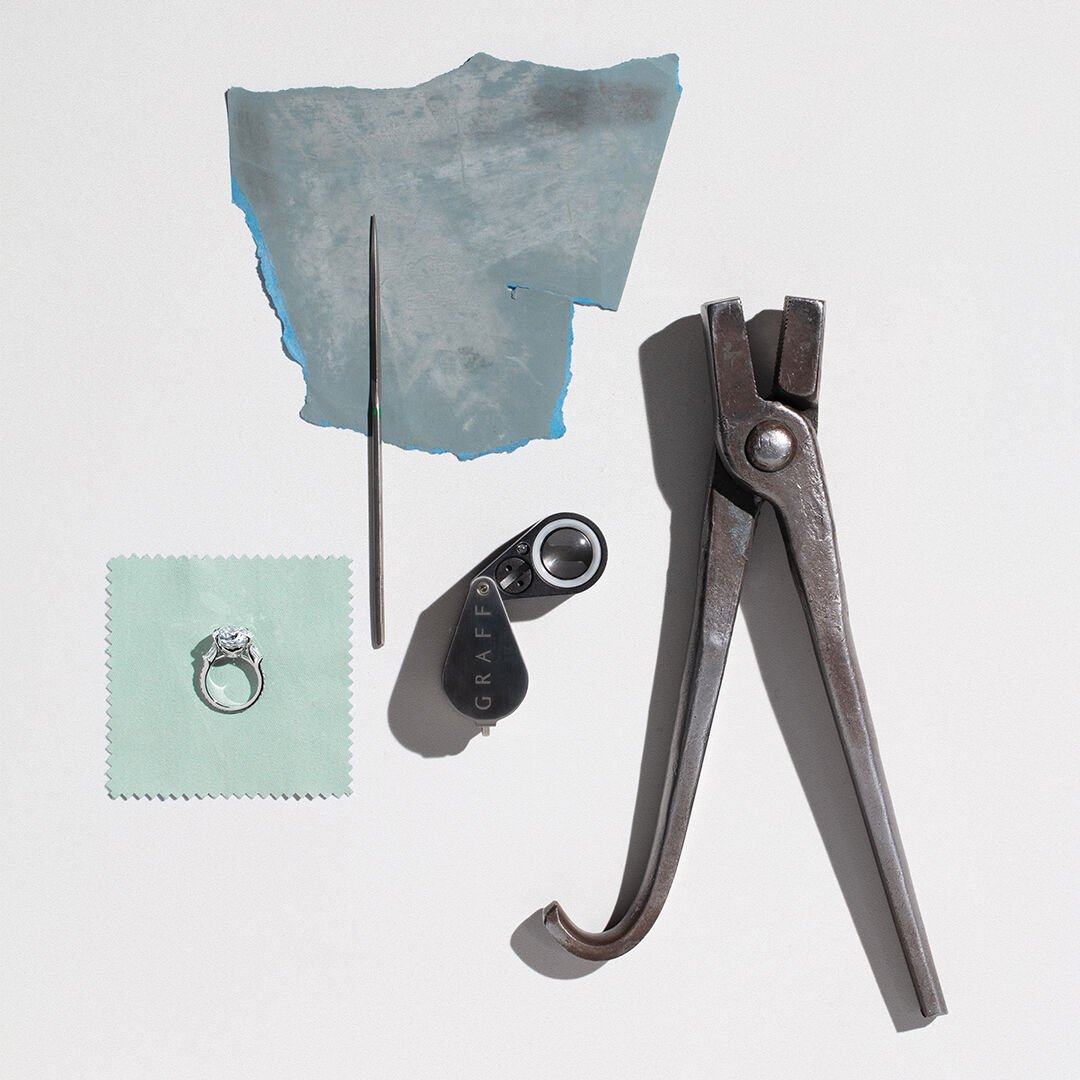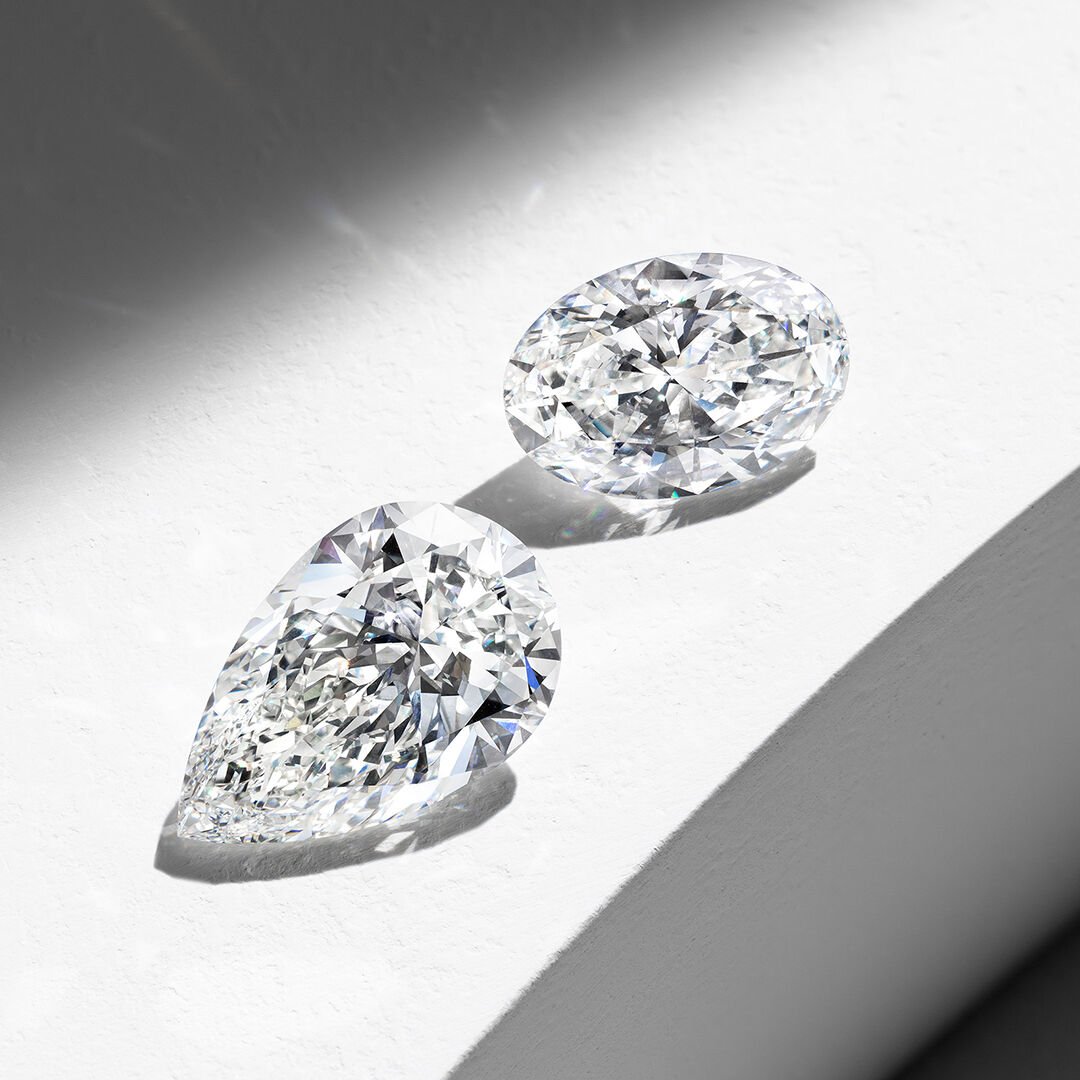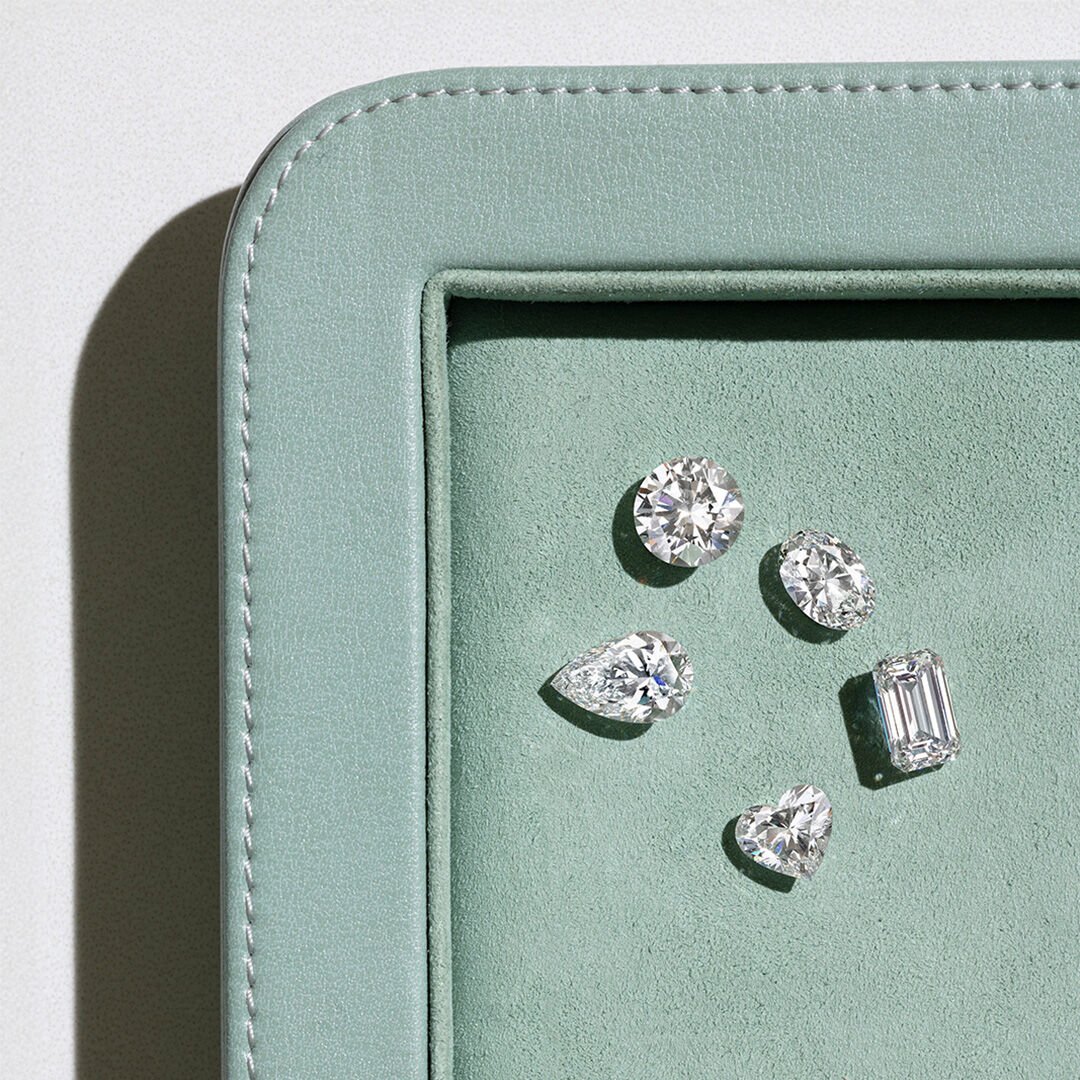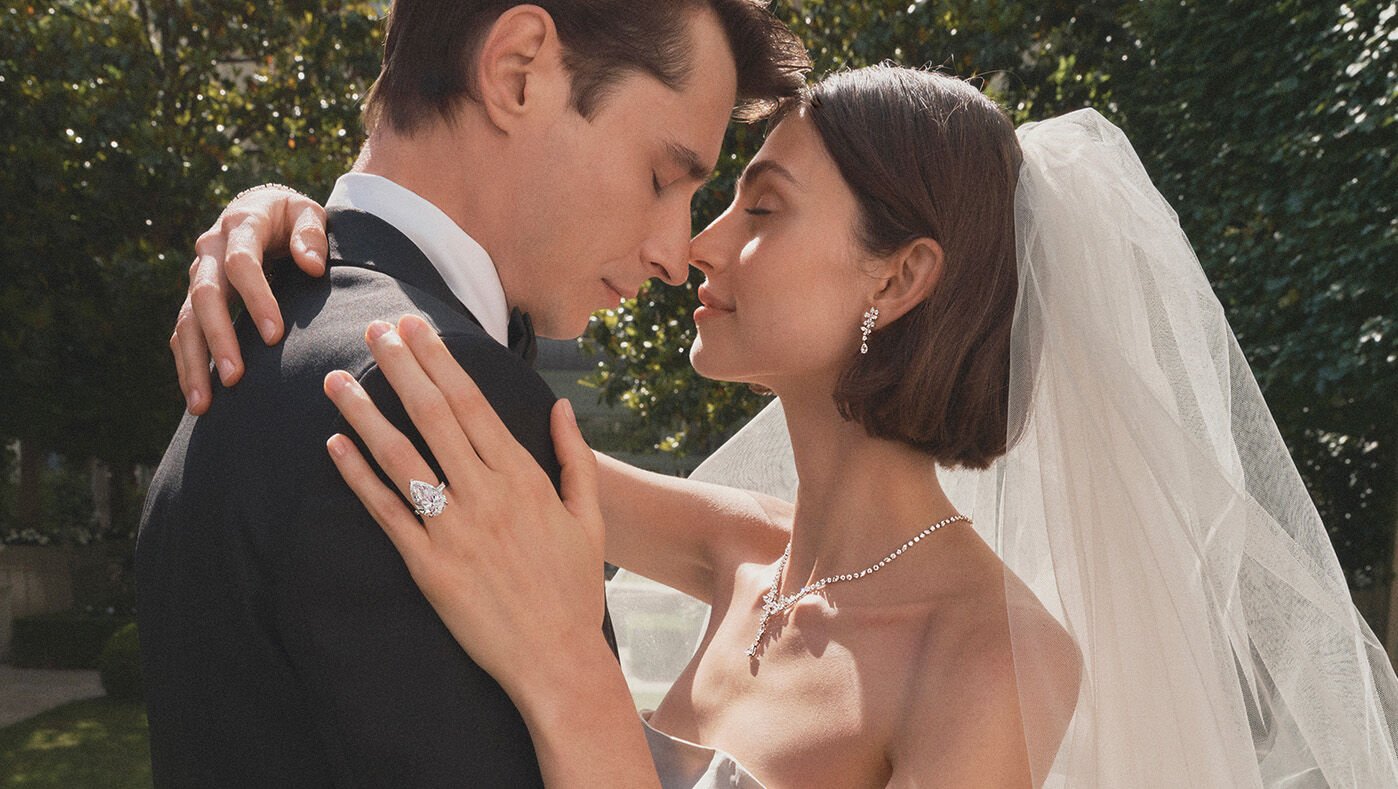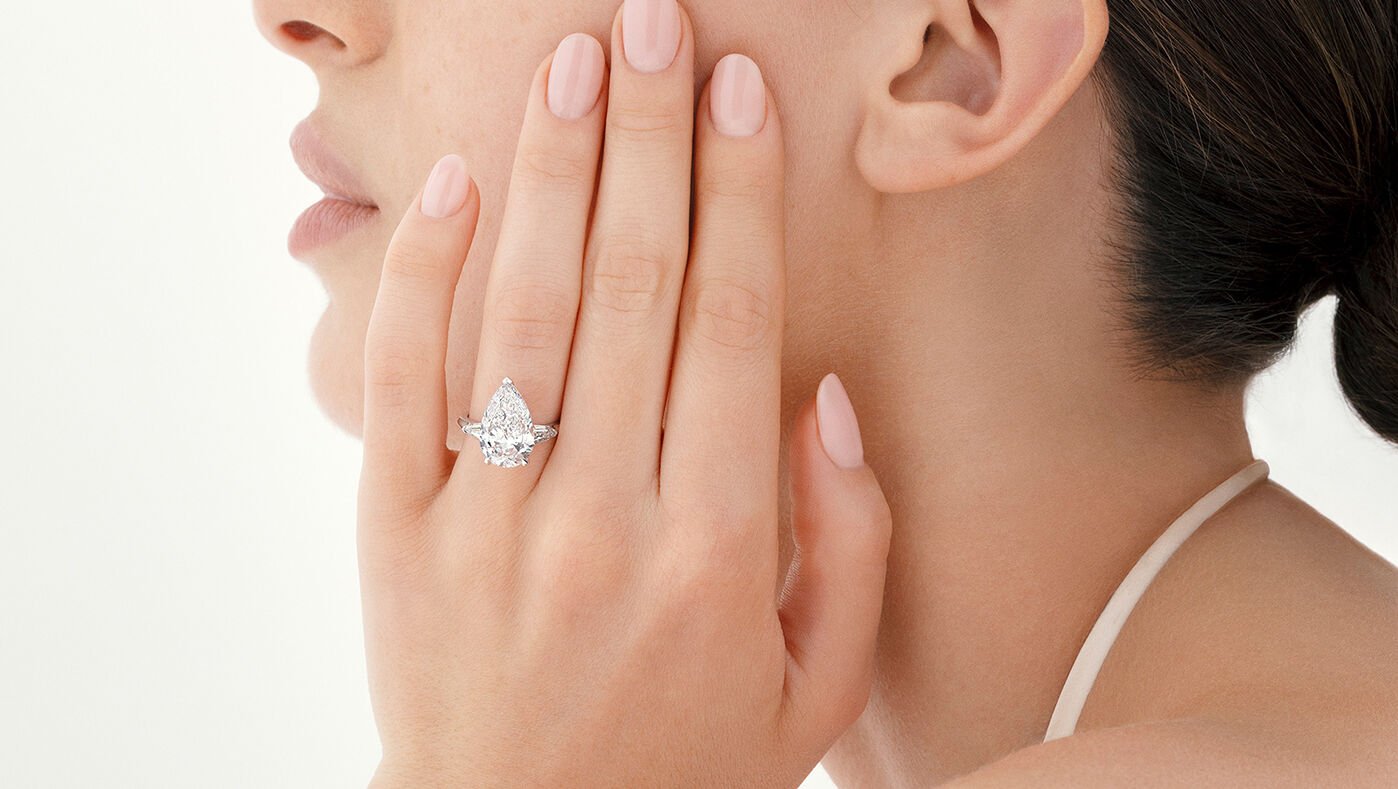
DIAMOND GUIDES
Explore Graff Bridal Guides
A Guide to Diamond Colour
When evaluating a diamond, colour is a crucial factor to consider, with the brilliance of a white diamond further enhanced by the absence of colour. Diamond colour forms part of the 4Cs, namely cut, clarity, carat weight, and colour, which all contribute to the assessment of a diamond’s beauty.
Within this Graff Guide, we explore the world of diamond colour and provide insights into the Gemological Institute of America’s diamond colour to ensure you have all the information you need when purchasing a diamond.
What is the diamond colour scale?
The diamond colour scale is a universal standard for grading a diamond’s colour. It begins with the letter D and continues with an increasing presence of colour to the letter Z, which represents light yellow, light brown, or light grey.
As you move down the diamond colour scale towards Z, subtle hints of colour become more apparent, impacting the stone's overall appearance. The diamond colour scale is, therefore, vital when assessing the diverse colour characteristics of a white diamond. The most highly regarded white diamonds are completely, or close to completely, colourless. Many of Graff’s diamonds range between D and G, the rarest and most sought-after grades, as they allow more light to pass through the stone, further enhancing the diamond’s brilliance.
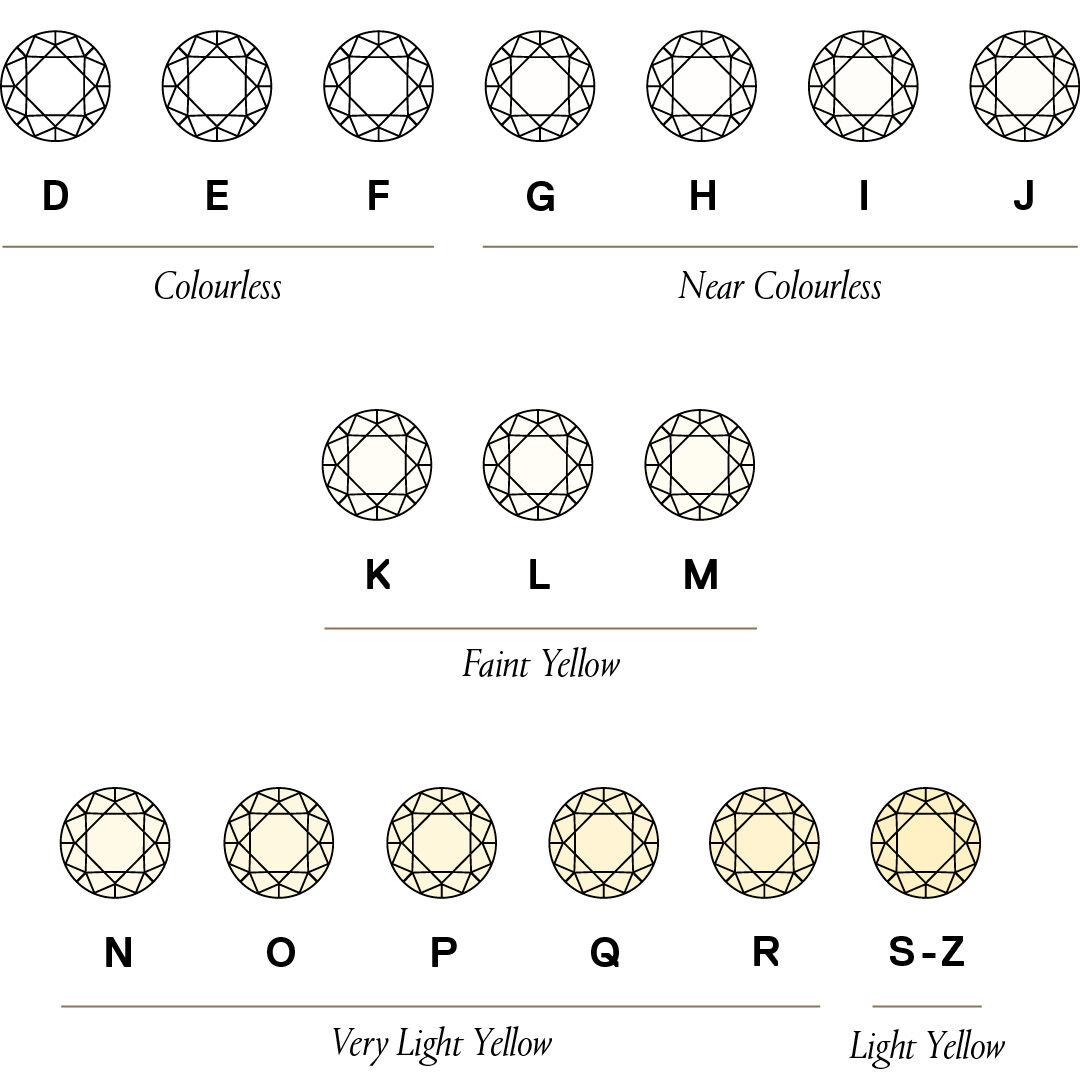
The GIA diamond colour grades
Established in 1931, the GIA is a public-benefit, non-profit institute renowned for its gemmological research. The GIA protects consumers through analysis, education, and gem grading and sets global quality standards. The GIA developed the definitive diamond colour scale or chart in the early 1950s when there were many different and subjective terms for describing a diamond’s colour, leading to inconsistency and inaccuracy.
Some of these terms included A, B and C, with multiple A’s used for the highest quality stones, as well as Arabic and Roman numerals and descriptions such as ‘gem blue’ or ‘blue white’. To avoid any confusion, the creators of the GIA colour scale started with the letter D – a grade that had traditionally not been used or associated with top-quality diamonds.
The 23 colour grades on the GIA diamond colour scale (or diamond colour chart) are subdivided into five subcategories, which are as follows:
D – F: Colourless
G – J: Near colourless
K – M: Faint
N – R: Very light
S – Z: Light
What are the factors affecting diamond colour?
While colourless or white diamonds are typically composed of carbon atoms arranged in a crystal lattice structure, coloured diamonds owe their vibrant hues to the presence of trace elements or structural abnormalities during their formation, including pressure, temperature, and radiation exposure.
Grading of coloured diamonds
Coloured diamonds are exceptionally rare, with only 1 in 10,000 diamonds exhibiting intense colouration. The grading of coloured diamonds is a complex and highly specialised process. The GIA grades coloured diamonds on a scale that evaluates the intensity of their colour, ranging from faint to fancy deep. The rarest and most valuable coloured diamonds fall into the ‘Fancy Vivid’ category, displaying an intense and pure hue that is truly mesmerising.
Graff has been the custodian of many of the world’s most celebrated coloured diamonds. Discover our featuring rare fancy coloured diamonds.
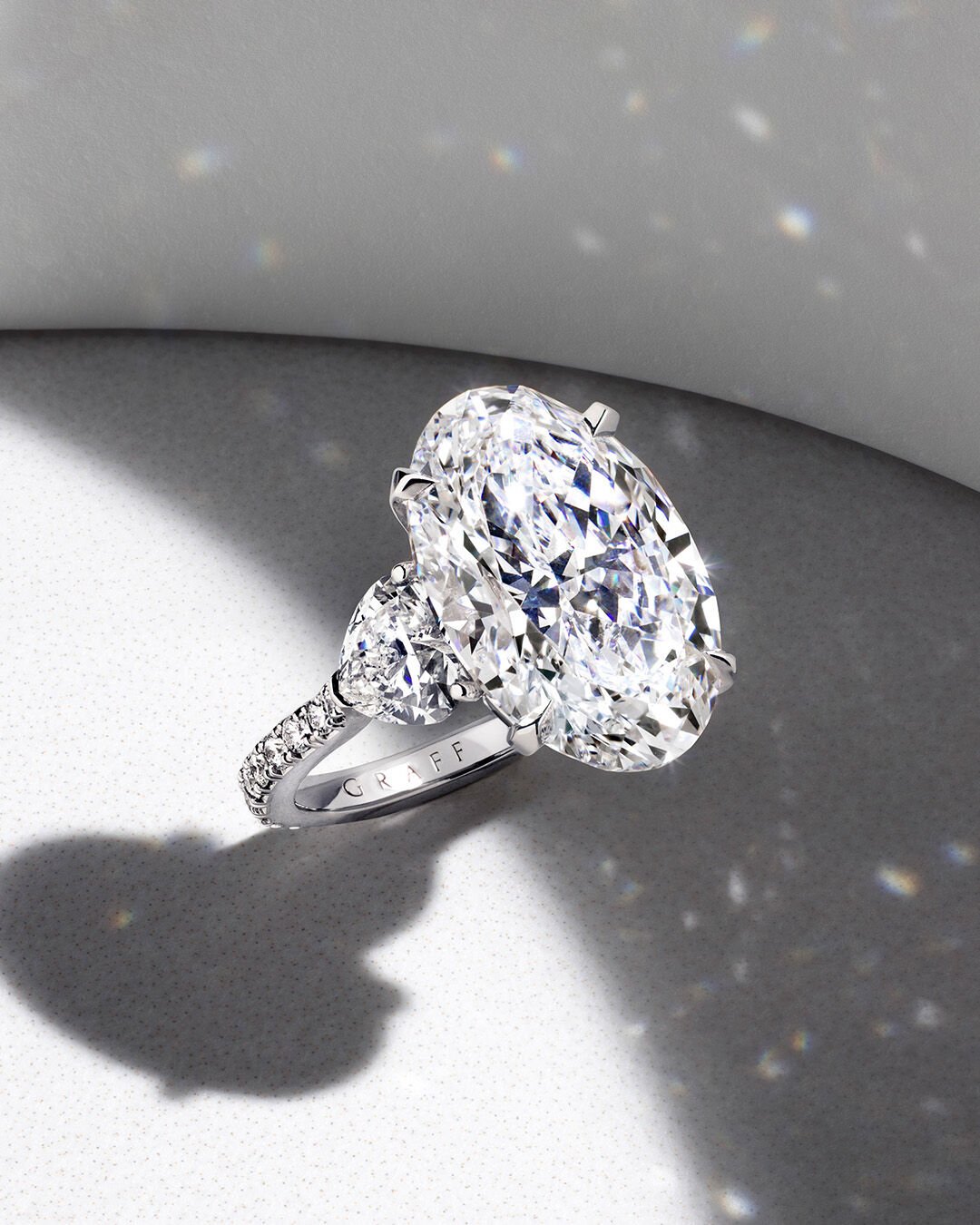
How a diamond’s cut impacts colour
Different diamond cuts can influence how the colour of a stone is perceived. A round brilliant cut is associated with concealing colour compared to other shapes. This is due to their facets, which maximise the light that passes through the stone and make slight colour hues less noticeable. In contrast, diamond cuts, such as the emerald cut, have long, open facets, which can make any traces of colour more apparent.
How carat size impacts diamond colour
The size of the diamond can impact the perception of colour. Diamonds with a higher carat weight have a greater surface area, making colour imperfections more visible. Therefore, as the carat size increases, you may consider a higher colour grade to maintain a colourless or near-colourless appearance.
When selecting a diamond, it's important to consider the interplay between shape, setting, and carat weight in relation to colour, as each factor can influence how diamond colour is perceived.
Our diamond experts can guide you to help you understand the nuances of a diamond’s colour and how this impacts its overall appearance. Every Graff diamond is meticulously evaluated and assessed to ensure absolute perfection at every stage of a stone’s journey and according to the 4Cs as prescribed by the GIA.
Frequently Asked Questions
Diamonds graded as F or G fall within the near-colourless range on the GIA colour scale. An F-graded diamond is near-colourless, and any hint of colour it may have is incredibly subtle and would be challenging to see with the naked eye. A G-graded diamond is also near-colourless but might exhibit the slightest hint of warmth when viewed under controlled lighting conditions.
The colour of a white diamond is crucial because it directly impacts a diamond's overall appearance. A colourless or near-colourless grade is highly sought after, as it allows the diamond to reflect light in a way that maximises its brilliance.
The GIA employs a colour grading scale for white diamonds, ranging from D (colourless) to Z (light yellow or brown). The grading is based on the diamond's absence or presence of colour. The colour grading process involves assessing the diamond under controlled lighting conditions.
The visibility of colour in a white diamond depends on its colour grade. Diamonds in the colourless and near-colourless range (D – J ) generally appear colourless to the naked eye. However, as you move down the colour scale, particularly beyond the near-colourless range, the presence of colour becomes more noticeable.


